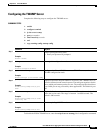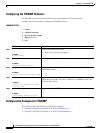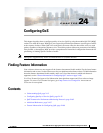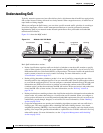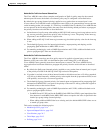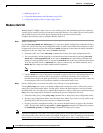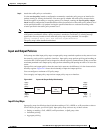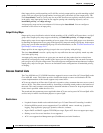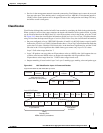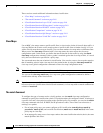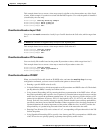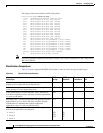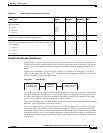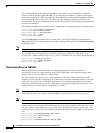
24-5
Cisco ASR 901 Series Aggregation Services Router Software Configuration Guide
OL-23826-09
Chapter 24 Configuring QoS
Understanding QoS
Step 3 Attach the traffic policy to an interface.
Use the service-policy interface configuration command to attach the policy map to an interface for
packets entering or leaving the interface. You must specify whether the traffic policy characteristics
should be applied to incoming or outgoing packets. For example, entering the service-policy output
class1 interface configuration command attaches all the characteristics of the traffic policy named class1
to the specified interface. All packets leaving the specified interface are evaluated according to the
criteria specified in the traffic policy named class1.
Note If you enter the no policy-map configuration command or the no policy-map policy-map-name global
configuration command to delete a policy map that is attached to an interface, a warning message
appears that lists any interfaces from which the policy map is being detached. For example:
Warning: Detaching Policy test1 from Interface GigabitEthernet0/1
The policy map is then detached and deleted.
Input and Output Policies
Policy maps are either input policy maps or output policy maps, attached to packets as they enter or leave
the router by service policies applied to interfaces. Input policy maps perform policing and marking on
received traffic. Policed packets can be dropped or reduced in priority (marked down) if they exceed the
maximum permitted rates. Output policy maps perform scheduling and queuing on traffic as it leaves the
router.
Input policies and output policies have the same basic structure; the difference is in the characteristics
that they regulate. Figure 24-2 shows the relationship of input and output policies.
You can configure a maximum of 32 policy maps.
You can apply one input policy map and one output policy map to an interface.
Figure 24-2 Input and Output Policy Relationship
Input Policy Maps
Input policy map classification criteria include matching a CoS, a DSCP, or an IP precedence value or
VLAN ID (for per-port, per-VLAN QoS). Input policy maps can have any of these actions:
• Setting or marking a CoS, a DSCP, an IP precedence, or QoS group value
• Individual policing
• Aggregate policing
Ingress
port
Apply
input
policy
Apply
output
policy
141150
Switching
and
forwarding
Egress
port
Apply
output
policy
Apply
input
policy



